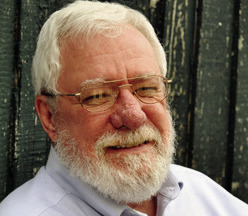Bradshaw
You probably didn’t think of the Acadia Parish community of Iota when you were watching the Oscar awards last week, or even take a hard look at the statuettes that carry the name. But maybe you should have.
The Oscar statue’s sculpter, George Maitland Stanley, was born in the Iota area in April 1903. He didn’t stay long, but can still be considered a native son.
The 1910 federal census shows his father, Oliver Maitland Stanley, then 57 years old, and mother, Abby Nowlin Stanley, living in Iota. Oliver was a native of Iowa, and Abby came from Kansas. The 1920 census places the family in Uvalde, Texas, but they seem not to have stayed there very long. Oliver died in Eagle Rock, California, in 1926.
George graduated from high school in Watsonville, California, and went on to study sculpture at Otis Art Institute in Los Angeles. He was teaching at the Santa Barbara School of the Arts when he married Elizabeth Kathleen Cotton, a Los Angeles illustrator, in August 1926. Their son, Maitland Cotton Stanley, was born in 1927 and must have inherited some of his parents’ artistic genes. He was the youngest person ever invited to join the California Watercolor Society. He graduated from the Chouinard Art Institute and worked for a few years as a commercial artist in New York before going into the airline business. According to his obituary, he spent 35 years as a cargo specialist for the SwissAir.

Bradshaw
George, the lad from Iota, spent his entire career in Los Angeles, where he was given several important commissions for sculptures. The most important of them was probably his huge (22 feet tall, 200 feet wide) sculpture of the Muse of Music, Dance, Drama that stands at the entrance to the Hollywood Bowl amphitheater, but the Oscar is surely his best known work – even though most people don’t know that he sculpted it.
The actual design for the statuette – a knight standing on a reel of film and holding a crusader’s sword – is credited to Metro-Goldwyn-Mayer (MGM)art director Cedric Gibbons. Stanley was commissioned to create the original Oscar based on Gibbons’s design. The film reel features five spokes, signifying the five original branches of the Academy of Motion Picture Arts and Sciences, that is, actors, directors, producers, technicians, and writers.
It was presented at the first awards banquet on May 16, 1929, to Emil Jannings for his work in the silent films “The Last Command” and “The Way of All Flesh.” That was the high point of Jannings’ career. He was born in Germany and never lost a thick German accent that kept him out of leading roles when talkies came into vogue.
The statue is officially known as the Academy Award of Merit, and there are several stories about how it came to be called Oscar.
Actress Bette Davis claimed for a while that she suggested the name because the backside of the statue looked like that of her husband Harmon Oscar Nelson. She said later that she just made up that story.
Hollywood gossip columnist Sidney Skolski said he came up with it, but didn’t say why or when. He was almost certainly the first to use it in print, on March 17, 1934, in a column about the awards. The name has also been attributed to academy librarian and executive director Margaret Herrick. She said the statue looked like her Uncle Oscar.
George Maitland Stanley never gave an opinion one way or the other, at least as far as can be found in any written record. He died May 11, 1970, in Los Angeles, where he is interred in a mausoleum at the Forest Lawn cemetery with only a small plaque to mark his grave.
There is no statue, or even a plaque, to tell the world that he came from Iota.
You can contact Jim Bradshaw at jimbradshaw4321@ gmail.com or P.O. Box 1121, Washington LA 70589.

